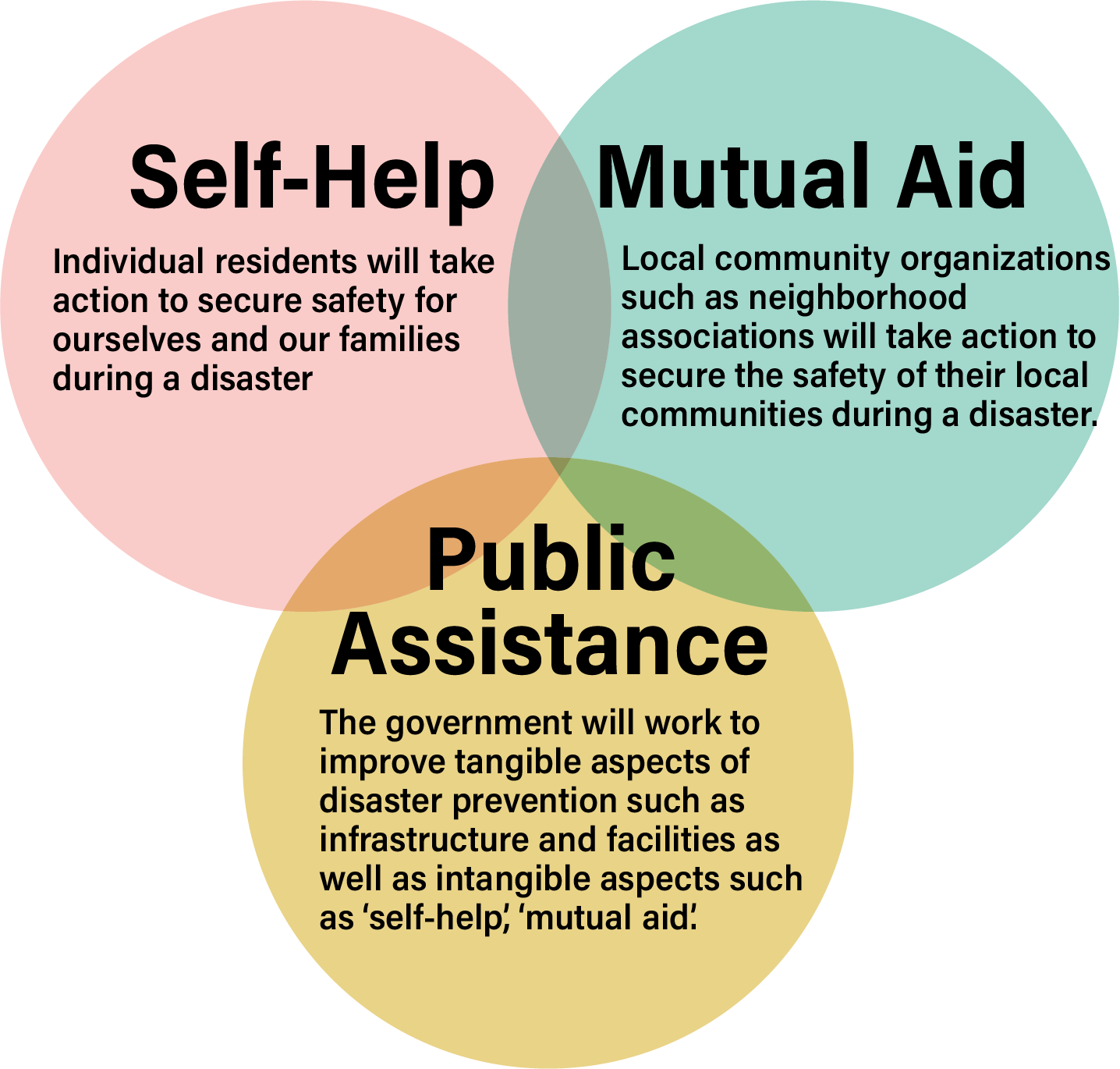
Disaster Management Manual
A manual for practitioners and decision makers!

Disaster Management Manual
A manual for practitioners and decision makers!
Recent studies on disaster management have shown that the perspective of disaster management needs to shift its focus from "response and recovery" to sustainable disaster mitigation. In order to achieve this shift, it is suggested that disaster management and community planning need to be integrated. Successful disaster "mitigation" also requires the inclusion of public participation at the local decision-making level in the disaster management process 1. This approach of involving citizens in disaster management before, during and after a disaster is known as "public engagement".
Public engagement in road disaster management is still in the research stage, but some initiatives have been initiated.
Social capital can be an important factor in disaster preparedness. Increased awareness of disaster preparedness and prevention among local residents will increase social capital, and increased social capital will increase local disaster preparedness.
In order to protect life, body, and property from disasters, it is of utmost importance to build a disaster-resistant community, and there are limits to the extent to which the government can respond to disasters. It is essential for citizens and the government to cooperate with each other in disaster management based on the principles of "Self-Help" to protect oneself, "Mutual-Aid" to support each other in one's neighborhood, and "Public-Assistance" for the government to support citizens. Figure 2.4.1 shows the basic relations among Self-help, Mutual-aid, and public-assistance. In order to achieve this, it is important for citizens themselves to further raise their awareness of disaster prevention, to pass on the lessons and knowledge gained from the experience of the earthquake to future generations, and to maintain and develop the bonds of support they have received from each other in their local communities and from organizations and people in Japan and abroad 2. In this way, the "power of citizens" is important in disaster management, and this is also the "role of citizens".

This role of local residents in disaster preparedness is clearly stated in Japan's Basic Act on Disaster Management as the "responsibility of residents" in disaster management. 3
(Basic Principles)
Article 2
(ii) (Omitted) disaster management activities conducted voluntarily by each resident and those conducted voluntarily by voluntary disaster management organizations (which means voluntary disaster management organizations based on a spirit of mutual cooperation among residents; the same applies hereinafter) and other various actors in the area are promoted as well;
(Responsibilities of Residents)
Article 7
(3) (Omitted) based on the Basic Principles, local residents must endeavor to take measures to store goods of daily necessity such as food and drink and to prepare for disaster by themselves and contribute to disaster management by voluntarily participating in disaster reduction drills and any other disaster management activities and handing down lessons learned from past disasters, and any other challenges.
The following explanations have been added to the above laws 5.
From the above, it can be seen that the "responsibility of citizens" in disaster management is to "prepare for disasters on their own" and "voluntarily participating in disaster prevention activities." In order to mitigate the damage caused by major disasters that are likely to occur in the near future, it is essential for citizens and communities to be aware of the importance of taking proactive and positive actions during normal times, in addition to measures taken by the government. For this reason, it is important to provide more opportunities for citizens to think about disaster prevention and to consider a mechanism for citizens to participate in disaster prevention planning and activities.
Road administrators have also started the following budding activities to encourage citizens as road users or as members of local communities near roads to "prepare for disasters on their own" and "voluntarily participate in disaster prevention activities".